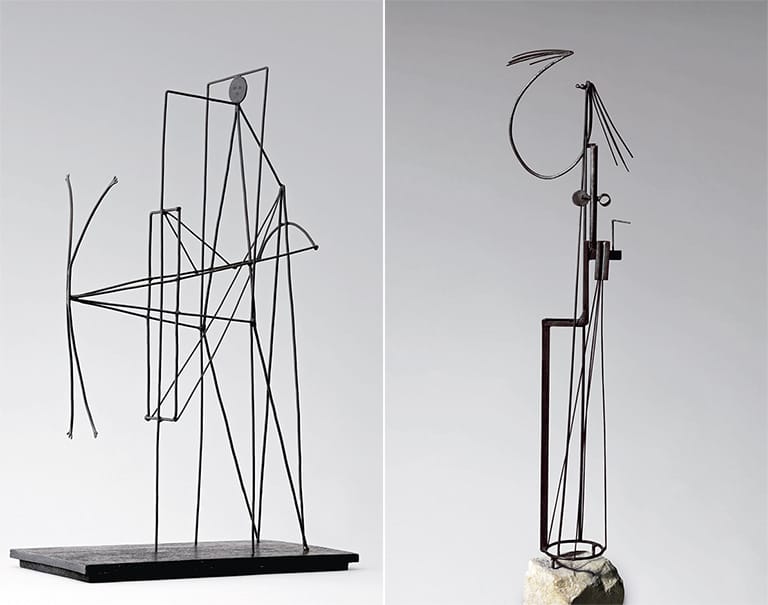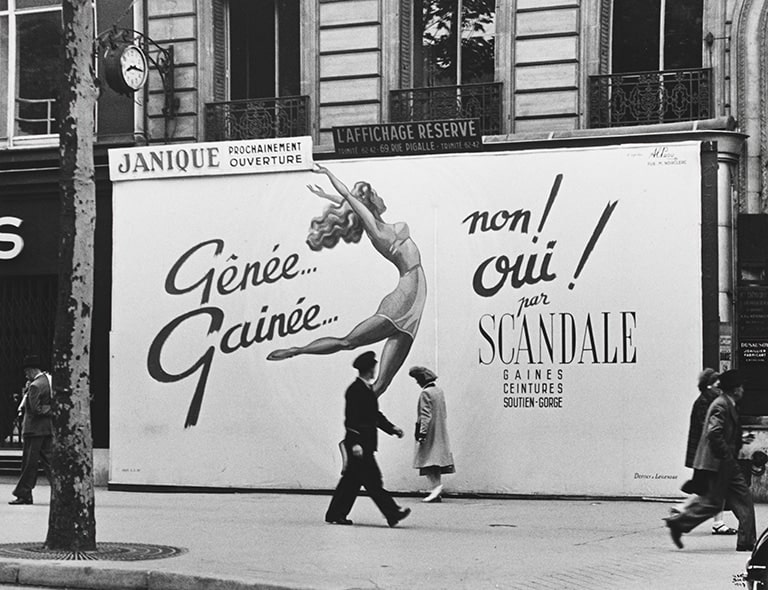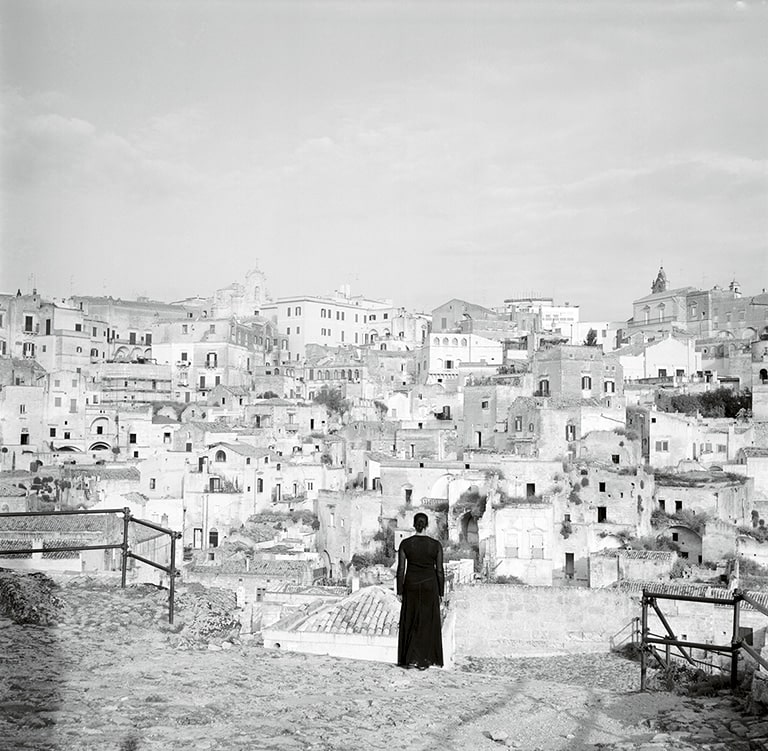Composición Surrealista [Surrealist Composition]

Manuel Viola
Composición Surrealista , 1942
© Manuel Viola, 2021
© Fundación MAPFRE COLLECTIONS
Technique
Ink on paper
Dimensions
Paper size: 19 × 15.5 cm (7 1/2 × 6 1/8 in.)
Frame size:51.5 x 50 x 4 cm
Inventory
FM000338
Description
In 1943, Viola was living clandestinely in Paris, where he met frequently with César González-Ruano, who was inspired by him to create one of the characters in his novel Manuel de Montparnasse (1943) and who describes Viola in his memoirs in the following way (Barcelona, Noguer, 1951): “Another Spaniard who I spent a lot of time with was “Manuel”, nom de guerre of José Viola, a native of Aragon who, at the time, was writing for short-lived and strange poetry magazines and who later devoted himself to painting”. “Manuel” was a very good friend of a French-Catalan poet named Roberto Ruis, who the Germans killed in the final days of the French occupation, and people in Paul Éluard’s group. He was deeply interested in bullfighting and even fought a bull once in the French region of Le Midi”.
The drawing entitled “Composición surrealista”(Surrealist Composition) is the illustration of an opuscule by Jean-François Chabrun, Les Déserts de l’enthousiasme, published in 1942 under the imprint of La Main à Plume, one of the “short-lived and strange” magazines that González-Ruano alluded to.The original drawing accompanies the first issue of the publication printed on Dutch gilt paper.
In 1933, Manuel Viola was one of the founders of the magazine Art, contributing texts about poetry, visual arts, music and dance in six of its ten issues. In 1934, he moved to Barcelona to study in the School of Philosophy and Literature, where fellow students included Guillermo Díaz Plaja and Salvador Espriu. In January of 1936, the lectures that Paul Éluard gave in Barcelona and, later, in Madrid, on the occasion of the Picasso exhibition was of special importance to young artists associated with ADLAN, who identified themselves as a “surrealist group”. That same year, Viola wrote other texts which suggest his adhesion to a movement of whose founding principles he was still personally unaware. During the Spanish Civil War, in which he fought in the POUM militias, he befriended the poet Benjamin Péret, who took him in later in Paris after he had managed to escape from the Valbonne military camp. It was then that he met members of La Main à Plume, a group which, encouraged mainly by Jean-François Chabrun and Noël Arnaud, wanted to reclaim and make creative use of the legacy of Surrealism. Viola took part in all the internal debates, signed several manifestos and published numerous poetic and theoretical texts.
Starting in 1944, while living in Normandy, Viola began to paint, quickly evolving toward abstraction. At the time, he visited Francis Picabia, among others.In 1945, he participated in the famous mural painting created for the Sainte-Anne pyschiatric center, with Francis Bott, Honorio García Condoy, Frédéric Delanglade, Óscar Domínguez, Luis Fernández, Maurice Henry, Jacques Hérold, Marcel Jean and Baltasar Lobo. That same year, he exhibited at the Salon des Surindépendants in Paris, where the work he sent caught the eye of Charles Estienne in Terre des hommes.Much later, in his “Conversation à l’Escurial” with Jean-Luc de Rudder, published in Brussels in 1962, in the magazine Ring des Arts, he would say:”My questioning search is indebted clearly to surrealism. A step with regard to the brief history of this movement, which hides, in part, its greater role.From surrealism, I have preserved the demands on myself, the moral attitude.It constitutes, as you well know, the most important philosophical undertaking of the last few centuries.Its objective is the interior realization of man, destroying oppressive reality and aspiring to a new revolutionary reality in which art is simultaneously the reflection and one of the primary mediums of action.
[Emmanuel Guigon]
GUIGON, Emmanuel (ed.), Manuel Viola. Escritos surrealistas (1933-1944), Teruel, Museo de Teruel, 1996.
Homenaje a Viola: artistas aragoneses, Zaragoza, Feria de Zaragoza, Asociación de Amigos de Aragón-Bearn, 1987.
ICHÉ, Laurence; ÁLVAREZ ENJUTO, José Manuel y GRANDE, Félix, Manuel Viola, cat. exp. Cuenca, Fundación Antonio Saura, 2003.
Manuel Viola, Madrid, Rayuela, 1987.
Manuel Viola, cat. exp. Cuenca, Fundación Antonio Saura, 2003.
Manuel Viola. Exposición antológica, cat. exp. Madrid, Museo Español de Arte Contemporáneo, 1972.
Manuel Viola. Exposición antológica, cat. exp. Madrid, Ministerio de Cultura, Museo Español de Arte Contemporáneo, 1988.
Manuel Viola. Exposición antológica, cat. exp. Zaragoza, Diputación de Zaragoza, 1989.
NADAL GAYA, Juan Manuel, José Viola Gamón, Lleida, Caixa de Barcelona, 1987.
Viola, Madrid, Ateneo, 1961.
Viola, Madrid, Dirección General de Bellas Artes, 1965.
Viola esencial: pinturas 1947-1986, Oviedo, Caja de Asturias, 1994.
Viola. Óleos, cat. exp. Madrid, Galería Columela, 1973.
Viola poetic, Lleida, Museu d’Art Jaume Morera, 1997.
VIOLA, Manuel, Escritos surrealistas, Teruel, Museo de Teruel, 1996.




